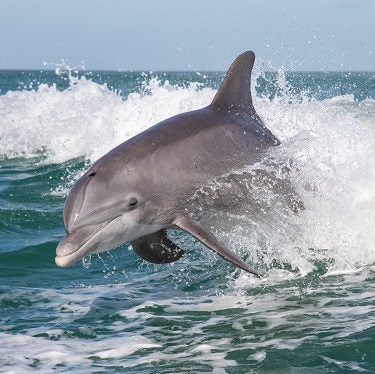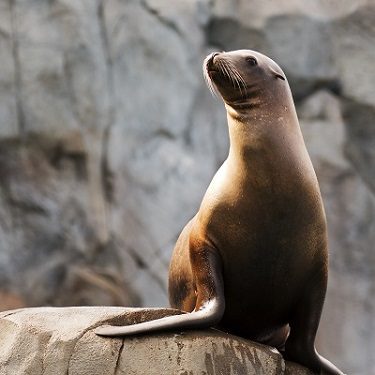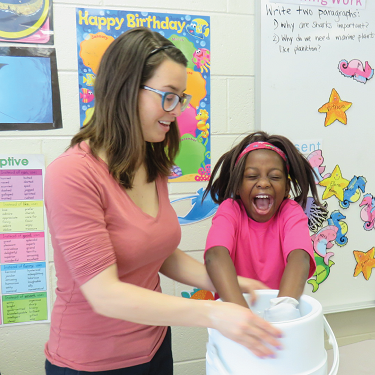Marine Life Encyclopedia
Seabirds
Galapagos Penguin
Spheniscus mendiculus
Distribution
Restricted to the Galapagos Islands
eCOSYSTEM/HABITAT
Nest on rocky shores; feed on rocky reefs and in surrounding currents
FEEDING HABITS
Foraging predator
TAXONOMY
Order Sphenisciformes (penguins), Family Spheniscidae (penguins)
This species is able to survive at the equator because of the unique biogeography of the Galapagos Islands. Cold, productive water travels from Antarctica via the Humboldt Current, which flows to this island group.
Like many animals near the equator, Galapagos penguins breed year round. Unlike the Antarctic penguins, Galapagos penguins do not need to worry about their eggs freezing. Instead they have to worry about them overheating or being attacked by egg predators. Galapagos penguins nest along the shoreline, and when nesting, one parent feeds while the other cares for the egg. Incubation takes longer than one month. Galapagos penguins form strong pair bonds and remain with the same partner for their entire lives. They are foraging predators that primarily eat small fishes. They forage relatively close to shore, as they are prey for the large marine predators of the Galapagos Islands, namely sharks, fur seals, and sea lions.
Based on their small geographic distribution, their already naturally low numbers, and their decreasing population size, Galapagos penguins are considered endangered (highly vulnerable to extinction). Some individuals are accidentally caught by fishers targeting other species, but the two biggest issues for Galapagos penguin populations are climate variability and invasive species. The cyclical, large-scale climate phenomenon known as El Niño significantly reduces the amount of food available to Galapagos penguins, causing them to skip nesting. In severe cases, these events can lead to starvation of the adults. While El Niño is a natural phenomenon, there is some growing evidence that human activities acting on the climate system as a whole may increase the severity or frequency of El Niño events. Perhaps a greater risk to this species is the introduction of two very different species, both of which threaten adult and juvenile Galapagos penguins. Introduced cats attack and eat these penguins and have contributed to a direct reduction in population size. Introduced mosquitoes carry avian flu, a virus that is particularly deadly to Galapagos penguins and its close relatives. An outbreak of this flu could easily spread through large swaths of the remaining Galapagos penguin population. Finally, as Galapagos penguins (like all penguins) are air breathers that regularly come to the sea surface, an oil spill in the Galapagos Islands could be a major threat to this rare, coastal species. Scientists estimate that there are fewer than 600 breeding pairs of Galapagos penguins alive today, so without continuing conservation measures, the species could be at risk of being lost.
Engage Youth with Sailors for the Sea
Oceana joined forces with Sailors for the Sea, an ocean conservation organization dedicated to educating and engaging the world’s boating community. Sailors for the Sea developed the KELP (Kids Environmental Lesson Plans) program to create the next generation of ocean stewards. Click here or below to download hands-on marine science activities for kids.
Additional Resources:
Get Involved

Donate Today
SUPPORT OUR WORK TO PROTECT THE OCEANS BY GIVING TODAY
With the support of more than 1 million activists like you, we have already protected nearly 4 million square miles of ocean.

TAKE ACTION NOW
Support policy change for the oceans
Decision-makers need to hear from ocean lovers like you. Make your voice heard!

VISIT OUR ADOPTION CENTER
SYMBOLICALLY ADOPT AN ANIMAL TODAY
Visit our online store to see all the ocean animals you can symbolically adopt, either for yourself or as a gift for someone else.

DOWNLOAD OCEAN ACTIVITIES
HELP KIDS DISCOVER OUR BLUE PLANET
Our free KELP (Kids Environmental Lesson Plans) empower children to learn about and protect our oceans!




